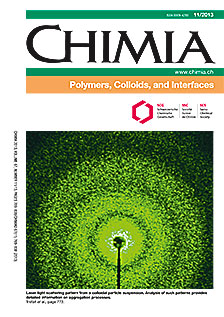Advances in Janus Nanoparticles
DOI:
https://doi.org/10.2533/chimia.2013.811Keywords:
Asymmetric particles, Janus nanoparticles, Non-centrosymmetric particlesAbstract
The design and synthesis of Janus nanoparticles has attracted great scientific interest in recent years. Novel optical, electronic, magnetic, and superficial properties emerge from their dimensions and unique morphology at the nanoscale. Additional properties emerge from the binary spatial distribution of functionalities on a single anisotropic nanoparticle, like amphiphilicity or new catalytic effects. As a result, Janus nanoparticles are highly versatile nanomaterials with great potential in different scientific and technological fields. In this paper, some of the advances in inorganic – inorganic and inorganic–organic Janus nanoparticles are highlighted. First, the main strategies followed to synthesize Janus nanoparticles are described. Second, some of the properties and applications of Janus nanoparticles are described in four different fields: interfaces and emulsions, biomedicine, catalysis, and molecular colloids and suprastructures.Downloads
Published
2013-11-27
Issue
Section
Scientific Articles
License
Copyright (c) 2013 Swiss Chemical Society

This work is licensed under a Creative Commons Attribution-NonCommercial 4.0 International License.
How to Cite
[1]
Chimia 2013, 67, 811, DOI: 10.2533/chimia.2013.811.







